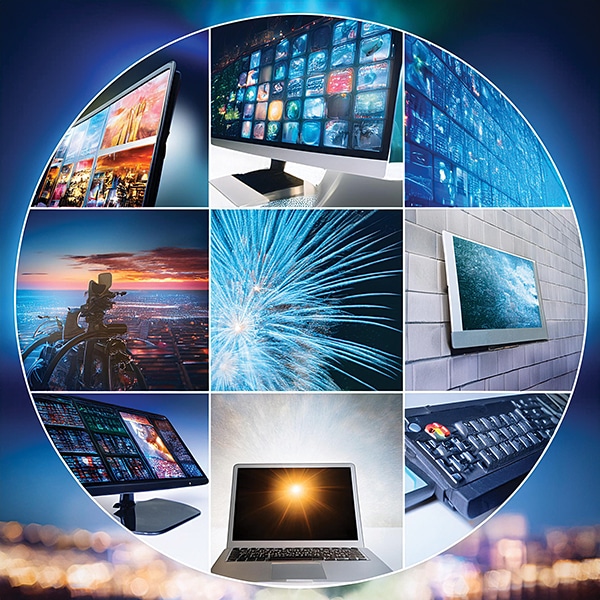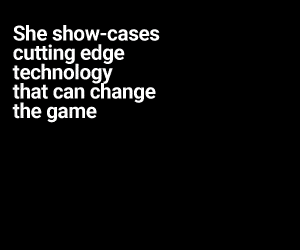ITAD technology is reshaping how we experience digital content, where touchscreens respond with depth and sensation, blending physical and virtual experiences.
Technology has consistently expanded the limits of what we once thought possible, reshaping how we engage with the digital world with each breakthrough. One such revolutionary innovation is ITAD (Immersive Touch and Display) technology, which provides users with a three-dimensional touchscreen experience. This article explores the nuances of ITAD technology, its diverse applications across industries, and the profound impact it may have on the future of human-computer interaction.

Understanding ITAD technology
ITAD technology represents a convergence of immersive experiences and tactile feedback, creating a sensation akin to physically interacting with digital content. At its core, ITAD relies on sophisticated hardware and software components to deliver a seamless user experience. Central to this technology is using depth-sensing cameras, haptic feedback mechanisms, and advanced display panels.
The 3D touch experience ITAD technology enables users to interact with digital interfaces more intuitively and immersively. Unlike traditional touchscreens, which primarily offer two-dimensional input, ITAD technology adds depth to the interaction, allowing users to manipulate objects in a virtual space with greater precision and realism.
Applications of ITAD technology
The versatility of ITAD technology extends across various domains, revolutionising how we interact with digital content in numerous applications:
Education
In the field of education, ITAD technology offers immersive learning experiences, allowing students to engage with complex concepts in a three-dimensional environment. Interactive simulations and virtual laboratories enable hands-on learning, fostering a more profound understanding and retention of subject matter.
Healthcare
ITAD technology facilitates advanced medical training and surgical simulations within healthcare settings. Surgeons can practise intricate procedures in a virtual environment, refining their skills without the need for cadavers or live patients. Additionally, ITAD-enabled medical imaging systems provide enhanced visualisation of diagnostic data, aiding in more accurate diagnoses and treatment planning.
Gaming and entertainment
The gaming industry has embraced ITAD technology to deliver unparalleled gaming experiences. By incorporating 3D touch interactions into gameplay, developers can create immersive virtual worlds where players can manipulate objects, navigate environments, and engage with characters in new ways. Furthermore, ITAD technology enhances the viewing experience for multimedia content, such as movies and interactive storytelling experiences.
Design and engineering
ITAD technology facilitates collaborative prototyping and product visualisation in design and engineering fields. Designers and engineers can interact with virtual models in real time, making precise adjustments and annotations. This immersive approach to design accelerates the development process and fosters innovation by enabling more iterative and dynamic workflows.
Retail and marketing
ITAD technology has the potential to revolutionise the retail experience by enabling virtual try-ons for clothing and accessories. Customers can visualise how products look and fit in a three-dimensional space, enhancing their purchasing confidence and reducing the likelihood of returns. Additionally, immersive advertising experiences powered by ITAD technology captivate audiences and drive engagement through interactive storytelling and product demonstrations.

Implications for human-computer interaction
The advent of ITAD technology signifies a paradigm shift in human-computer interaction, blurring the lines between the physical and digital realms. By providing tactile feedback and spatial awareness, ITAD interfaces bridge the gap between the virtual and tangible worlds, opening up new possibilities for communication and collaboration.
One of the key implications of ITAD technology is its potential to enhance accessibility for individuals with disabilities. By incorporating haptic feedback and intuitive gestures, ITAD interfaces cater to a broader range of users, including those with visual or motor impairments. Furthermore, the immersive nature of ITAD experiences can provide new avenues for therapy and rehabilitation, allowing individuals to engage in therapeutic activities within virtual environments.
Moreover, ITAD technology can redefine productivity and creativity in the workplace. By enabling more natural and intuitive interactions with digital tools, ITAD interfaces empower users to express their ideas more fluidly and collaborate more effectively. Whether brainstorming ideas in a virtual workspace or sketching designs in three dimensions, ITAD technology fosters innovation by removing barriers to creativity.

Challenges and future directions
While ITAD technology holds immense promise, it also presents particular challenges that must be addressed for widespread adoption. Technical hurdles, such as ensuring seamless integration with existing software platforms and optimising performance across different hardware configurations, remain significant barriers to overcome. Additionally, privacy and data security concerns must be carefully addressed to safeguard user information in immersive environments.
Looking ahead, the future of ITAD technology promises ongoing innovation. Advancements in display technologies, such as holographic displays and volumetric projections, may further enhance the realism and immersion of ITAD experiences. Furthermore, advancements in artificial intelligence and machine learning could enable more intelligent and context-aware interactions within virtual environments, elevating the sophistication of ITAD interfaces.
ITAD technology represents a revolutionary approach to human-computer interaction, offering users a three-dimensional experience of touchscreen interaction that blurs the boundaries between the physical and digital worlds. With applications spanning education, healthcare, gaming, design, retail, and beyond, ITAD technology has the potential to transform how we learn, work, play, and communicate in the digital age. As research and development in this field continue to advance, we anticipate a future where immersive touch experiences become seamlessly integrated into our daily lives, unlocking new possibilities for creativity, collaboration, and innovation.
The author, Duraiarasu E, is B.E in Electronics and Communication Engineering. He is a Research Associate at the International Institute of Information Technology, Bangalore (IIITB). His areas of interest are IoT, VLSI, embedded systems, machine learning, 3D printing, and MEMS






